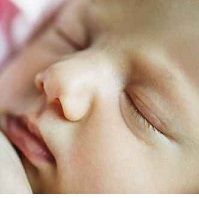Article
Infants' Risk of Asthma Depends on Gut Microbiome
Author(s):
Four types of gut microbiota acquired in infancy may protect babies from developing asthma, according to findings published in Science Translational Medicine.

Four types of gut microbiota acquired in infancy may protect babies from developing asthma, according to findings published in Science Translational Medicine.
Researchers from the University of British Columbia observed infants’ transient gut microbiome in their first 100 days of life by studying their fecal samples.
The researchers noted that in animal models, gut microbiota had been implicated in the development of asthma, but they wanted to examine whether this would hold true in human models. Babies from more than 300 families in Canada participated in the study.
The researchers found that four specific gut bacteria in three-month-old infants protected the babies from developing asthma. Most babies develop these bacteria naturally from their environments; however, all do not due to their birth circumstances or a variety of other factors.
The bacteria important to the asthma non-development were Faecalibacterium, Lachnospira, Veillonella, and Rothia (FLVR or “flavor”). There were differences in gut FLVR microbiota makeup in one-year-old children as well, the researchers said. They believed this was because the first three months of a child’s life are critical to microbiota development.
The investigators then used mice models to confirm the results of the study. Additionally, they found that newborn mice inoculated with FLVR microbiota developed less severe asthma.
“This discovery gives us new potential ways to prevent this disease that is life-threatening for many children,” co-lead researcher Dr. Stuart Turvey explained in a press release. “It shows there’s a short, maybe 100 day window for giving babies therapeutic interventions to protect against asthma.”
With a larger number of children involved in a study, the researchers would be able to verify the findings for human patients. Eventually, the team hopes to explore how the FLVR bacteria influence the onset of asthma and impact its severity. They believe that eventually, there may be a therapeutic use for FLVR in infants.
“This research supports the hygiene hypothesis that we’re making our environment too clean,” the study’s co-lead researcher B. Brett Finlay continued. “It shows that gut bacteria play a role in asthma, but it is early in life when the baby’s immune system is being established.”
In a YouTube video, Turvey and Findlay discussed how they decided to investigate their hypothesis. A postdoctoral fellow who aided with the study added that FLVR could be potentially used as asthma biomarkers. The FLVR bacteria can later be used to determine the risk of asthma in a person based on the abundance, she said.




